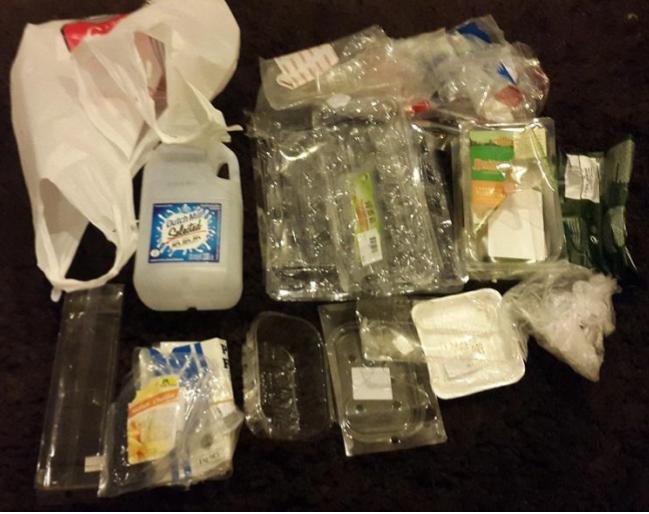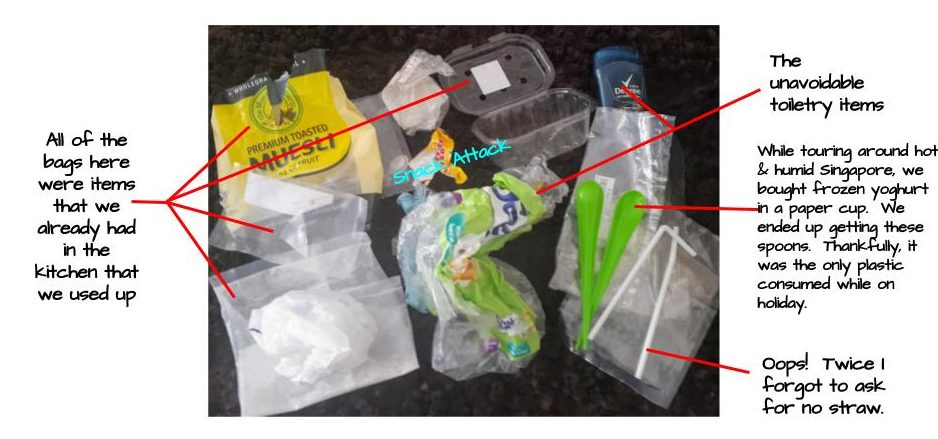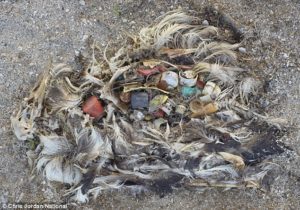One month plastic-free, the conclusion
The plastic-free challenge is officially at an end. It lasted exactly 30 days. It was not as difficult as we anticipated as we already put forth a considerable effort to reduce our plastic consumption. The biggest challenge we faced was changing our shopping habits. We no longer shopped at just one store and had to source fruits, veg, cheese, bread, etc. from a variety of different places. This took a lot of time, a little bit extra money, and a few extra fossil fuels to get around. Beyond the reduction in plastic, there were many benefits to this as well! We ate all organic, the bread was always fresh, the cheeses were delicious, and the food I cooked was healthy.
I just want to remind you of the plastic that we accumulated over one week:

One week’s plastic – before the challenge
Eggs comprised a large degree of our plastic waste. We switched to organic eggs that came packaged in cardboard. We eliminated all packaged foods (milk, pasta, chips, cheese as seen in the photo). We also shopped at the organic vegetable market with cloth bags instead of buying the convenient, plastic-wrapped fruit and veg from the grocery store.
So, did we succeed in going 100% plastic-free? No. We still had a lot of plastic kicking around the house when we started our plastic free month and inevitably it was consumed. Primarily this included lentils and dried fruit. Also, we (mostly me) messed up a few times!
You’ll see from the photo below that the plastic we generated in one month is far less than that which we generated in one week before the challenge:

So, what did we learn?
- The deli is awesome! Take your reusable container and fill that bad boy full of cheese!
- Everyone should own light-weight muslin/mesh baggies for their produce. They’re just as convenient as their plastic counterparts and wash so easily in the sink.
- We’ve made a habit of saying “no straw please.” We encourage you do develop that habit. Restauranteurs all get it and are happy to oblige!
- Reduce first, then reuse, then recycle. Yes, some plastic is unavoidable but it’s really easy to reduce your consumption. Use what you can again. Recycle as a last resort. By the way, we look forward to the implementation of plastic recycling here in Phnom Penh (apparently coming soon!)







